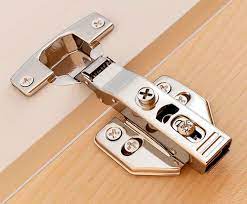The hinge is a small part that shoulders heavy responsibilities. It is responsible for the stability and movement of doors, windows, and furniture.
Stand with your back to a wall and hinge at the hips (stick your butt out behind you). The dowel should stay in contact with all three points. If it loses contact, you’re flexing your spine too much.
Visit for Hinge Supplier.
Choosing the Right Hinges for Your Project
Hinges are one of the most important pieces of hardware on any cabinet or door. Their style, placement, and usage have a huge impact on the functionality of your cabinets or project. Choosing the right hinge for your needs requires some thought and understanding of the different types of hinges available.
After spending dozens, or even hundreds of hours building something, the last thing you want to do is ruin it with a bad hinge. Choose the wrong hinge and you could damage the doors, detract from the design, or worse – cause them to hang poorly. Hinges do more than hold doors; they enhance or detract from the hours of exacting work that went into a piece of fine furniture or cabinet. The right set will blend seamlessly with form and maximize function, while a mismatch can mar the personality of your project. There are many types of hinges, from mortise butt hinges that are largely hidden to more elaborate surface-mounted hinges such as Euro, fiche, lift-off, and Soss hinges.
Hinges for Folding Tables
The right hinges are essential for folding tables and other furniture that folds. The right hinges ensure your table is sturdy enough to support its weight and prevent the folding section from collapsing or bending when open. Our selection includes butt hinges, piano hinges, continuous hinges and concealed hinges. Butt hinges are a classic, reliable type of hinge with a cylindrical protrusion in the middle of two flat plates attached by a pin. Piano hinges are long and narrow, run the full length of a table’s legs to provide a smooth and even folding motion, and are durable for heavy loads.
Continuous hinges are ideal for larger tables because they distribute a table’s weight evenly and help to prevent sagging. Concealed hinges are sleek and modern and can be hidden in the table’s material for a seamless look. Our hinges also come in different finishes and materials to suit any style. If you are renovating a table or building one from scratch, the hinges used are just as important as any other component of the piece.
Hinges for Butler Trays
Butler tray hinges, also known as card table hinges, provide additional support and stability in furniture with folding trays. They lock open in flat position and hold the tray vertical at 90 degrees with a spring loaded mechanism. They are often used in modern computer desks to allow for the tray to fold under the keyboard when not in use.
This type of hinge is a semi-concealed hinge, meaning that it only hides a small portion of the door or cabinet face. It allows the rest of the surface to remain unobscured. It features side adjustment, which regulates gaps between the doors and walls for perfect parallel alignment. This feature helps ensure that your cabinets and doors are perfectly aligned, making them easier to close and open. It also makes it easy to disassemble the hinges for cleaning and refinishing. This style of hinge is also available in a variety of finishes, including antique brass, black, and satin nickel.
Hinges for Unequal Leaf Drop Tables
Drop leaf table sets are a great way to save space in a modern kitchen. They are easy to maneuver with the rollers that they have under them making it convenient to move them from one place to another. The modern style of the set also makes it a sleek addition to any home.
The HCTH-4S-180 is a hinge designed specifically for tables with unequal length leaves. It uses a rule joint with two hinge leaves of unequal lengths mortised into the underside of the table top to prevent a bind when opening and closing the leaf. It also includes a spring to time the rotation of the leaf so it will not bind against the frame.
The rule joints in this hinge are milled with a router using a cove bit and a round over (see drawing 1 for an example). While this type of joinery is simple to do, it requires precise machining to get the proper fit.
